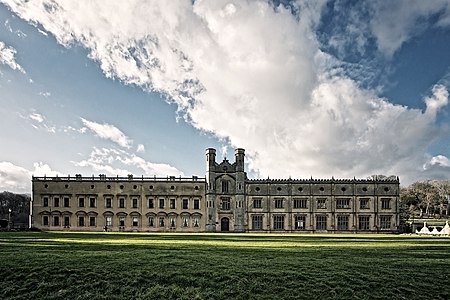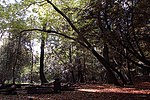Ashton Court

Ashton Court is a mansion house and estate to the west of Bristol in England. Although the estate lies mainly in North Somerset, it is owned by the City of Bristol. The mansion and stables are a Grade I listed building. Other structures on the estate are also listed. Ashton Court has been the site of a manor house since the 11th century, and has been developed by a series of owners since then. From the 16th to 20th centuries it was owned by the Smyth family with each generation changing the house. Designs by Humphry Repton were used for the landscaping in the early 19th century. It was used as a military hospital in the First World War. In 1936 it was used as the venue for the Royal Show and, during the Second World War as an army transit camp. In 1946 the last of the Smyth family died and the house fell into disrepair before its purchase in 1959 by Bristol City Council. The estate developed from the original deer park and is Grade II* listed on the Register of Historic Parks and Gardens of special historic interest in England. It is the venue for a variety of leisure activities, including the now-defunct Ashton Court Festival, Bristol International Kite Festival and the Bristol International Balloon Fiesta. It is home to charity The Forest of Avon Trust.
Excerpt from the Wikipedia article Ashton Court (License: CC BY-SA 3.0, Authors, Images).Ashton Court
St Mary's Road,
Geographical coordinates (GPS) Address Nearby Places Show on map
Geographical coordinates (GPS)
| Latitude | Longitude |
|---|---|
| N 51.4479 ° | E -2.6446 ° |
Address
Ashton Court Golf Course
St Mary's Road
BS8 3PY
England, United Kingdom
Open on Google Maps







